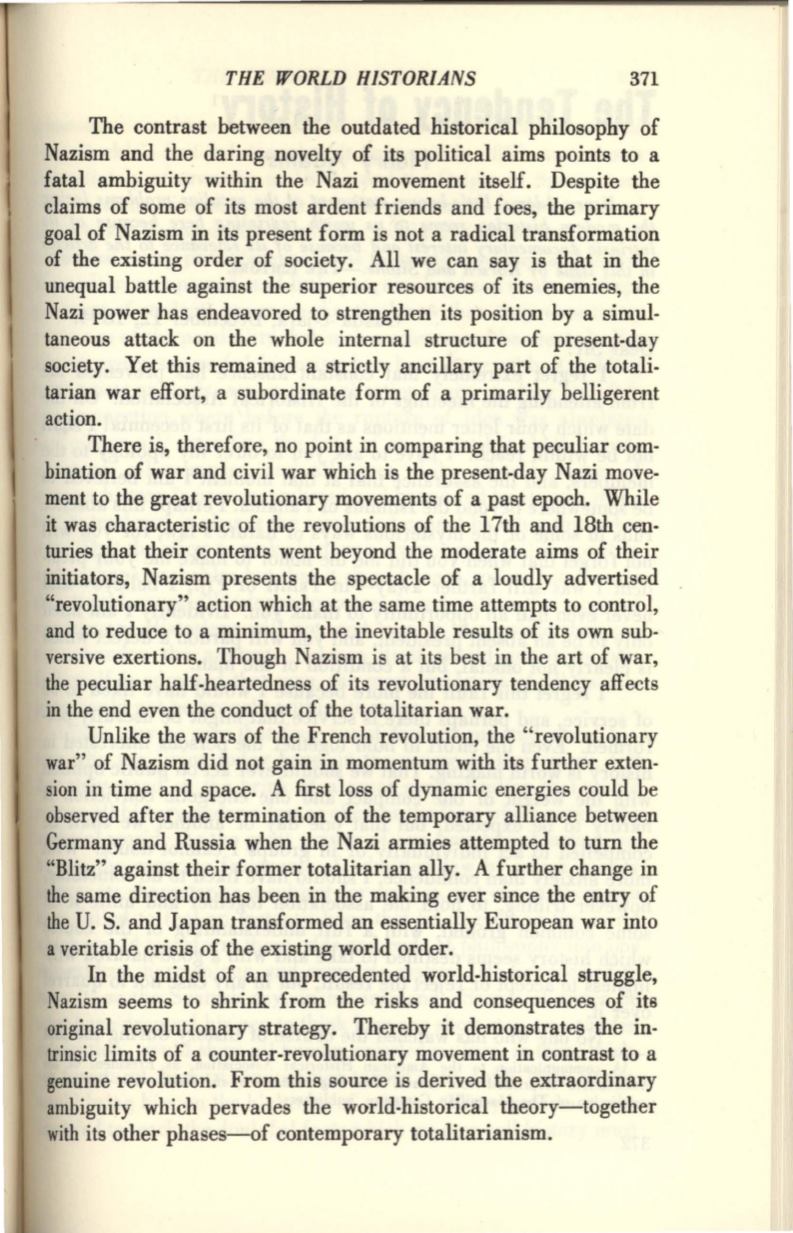
THE WORLD HISTORIANS
371
The contrast between the outdated historical philosophy of
Nazism and the daring novelty of its political aims points to a
fatal ambiguity within the Nazi movement itself. Despite the
claims of some of its most ardent friends and foes, the primary
goal of Nazism in its present form is not a radical transformation
of the existing order of society. All we can say is that in the
unequal battle against the superior resources of its enemies, the
Nazi power has endeavored to strengthen its position by a simul–
taneous attack on the whole internal structure of present-day
society. Yet this remained a strictly ancillary part of the totali–
tarian war effort, a subordinate form of a primarily belligerent
action.
There is, therefore, no point in comparing that peculiar com–
bination of war and civil war which is the present-day Nazi move–
ment to the great revolutionary movements of a past epoch. While
it was characteristic of the revolutions of the 17th and 18th cen·
turies that their contents went beyond the moderate aims of their
initiators, Nazism presents the spectacle of a loudly advertised
"revolutionary" action which at the same time attempts to control,
and to reduce to a minimum, the inevitable results of its own sub–
versive exertions. Though Nazism is at its best in the art of war,
the peculiar half-heartedness of its revolutionary tendency affects
in the end even the conduct of the totalitarian war.
Unlike the wars of the French revolution, the "revolutionary
war" of Nazism did not gain
in
momentum with its further exten–
sion in time and space. A first loss of dynamic energies could be
observed after the termination of the temporary alliance between
Germany and Russia when the Nazi armies attempted to turn the
"Blitz" against their former totalitarian ally. A further change in
the same direction has been in the making ever since the entry of
the U. S. and Japan transformed an essentially European war into
a veritable crisis of the existing world order.
In the midst of an unprecedented world-historical struggle,
Nazism seems to shrink from the risks and consequences of its
original revolutionary strategy. Thereby it demonstrates the in–
trinsic limits of a counter-revolutionary movement in contrast to a
genuine revolution. From this source is derived the extraordinary
ambiguity which pervades the world-historical theory-together
with its other phases-of contemporary totalitarianism.


